Field measurements
Large-Scale Tracking of Snowfalls
Whether it be snow, rain, hail, drizzle, or sleet, precipitation manifests complex particle sedimentation dynamics in the turbulent atmosphere. ― How do large collections of droplets, crystals, or aggregated snowflakes descending through the air column interact with different turbulence intensity levels, for different atmospheric conditions? ― Our research involves outdoor imaging of natural snowfalls using state-of-the-art imaging techniques from experimental fluid dynamics. We aim to gain novel understanding of the three-dimensional nature of the clustering dynamics for large collections of snowflakes that dance through the atmospheric surface layer over unprecedented scale and numbers.
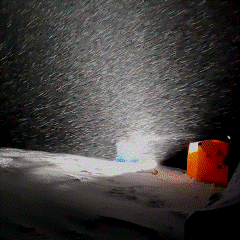
Field experiments are performed at the Weissfluhjoch instrumentation field of the Institute for Snow and Avalanche Research (SLF) in Davos. This professional field site co-locates multiple MeteoSwiss and IMIS meteorological towers including temperature, humidity, disdro- and pluviometers, cup-and-vane, and sonic anemometers for flow monitoring. Currently, we are developing a novel field imaging system involving 16 high-resolution cameras on arrays to construct a super-large-scale measurement volume with a diffraction-limited resolution of 2mm over tens of meters.
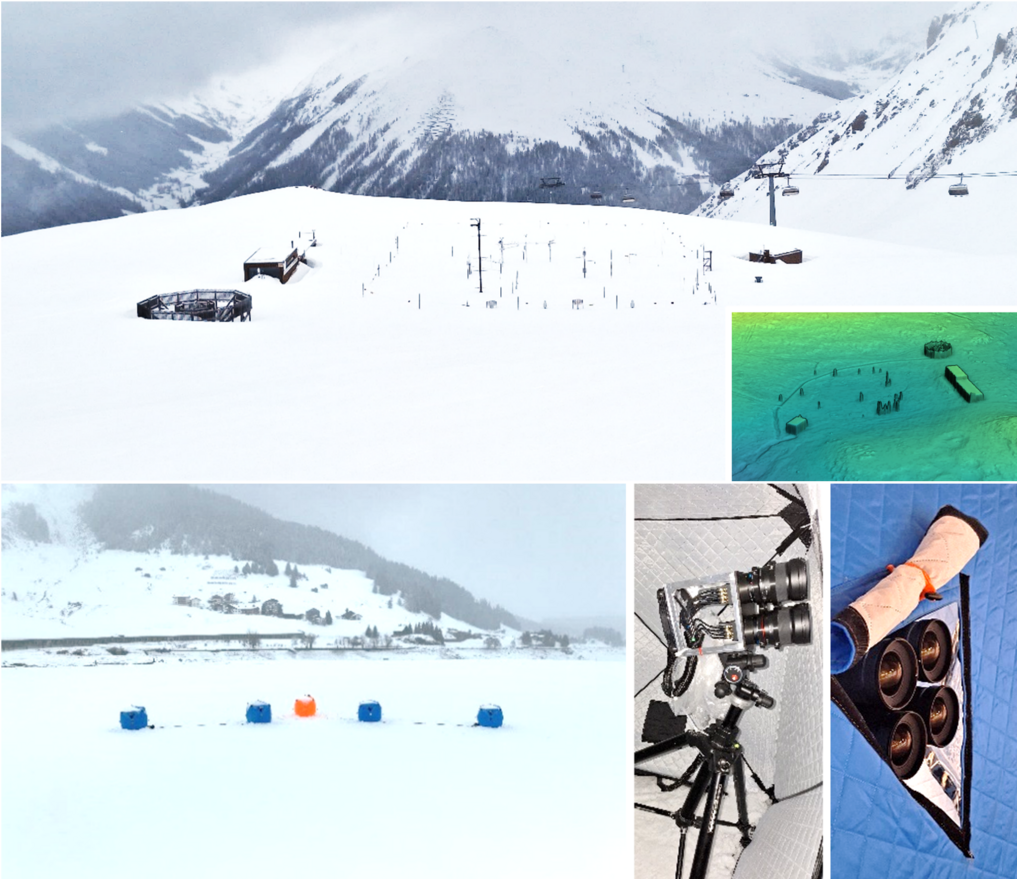
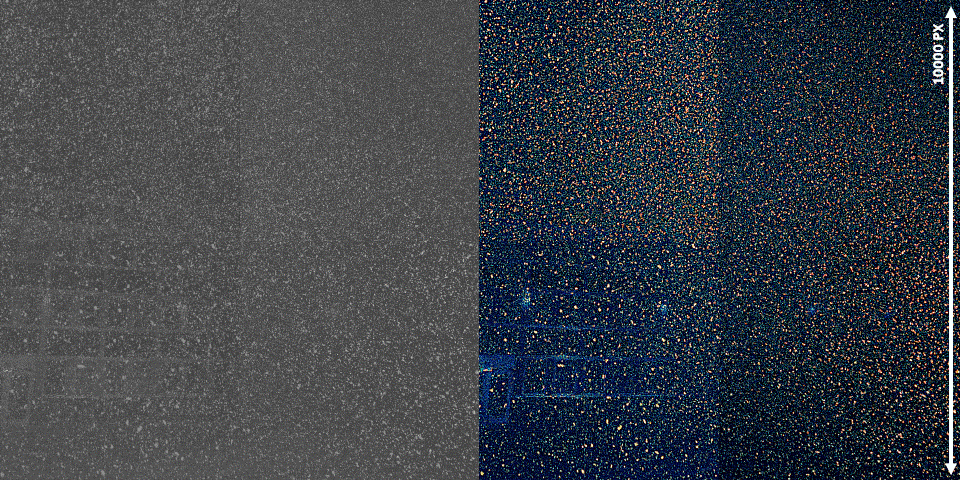
Airborne Snowflake Imaging
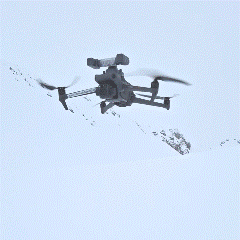
From crystal formation high in the atmosphere down to precipitating snowfall at ground level: no snowflake takes the same path through the air column. During descent, snow-crystals grow, coalesce, break, and rime into graupel, while in turn, the size, shape, and complexity dictate the precipitation dynamics. From glide to spin to flutter to tumble: ‘What are the aerodynamics at display while interacting with the turbulent atmosphere?’
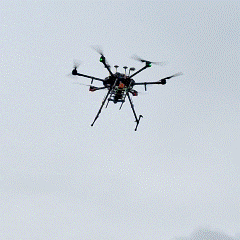
Our research involves unmanned aerial vehicles (drones) to explore the air column up to 120meter above ground level and image snowflakes through their most turbulent end-of-lifetime: their descent through the Prandtl layer. Our drone based platforms are twofold. A commercially available of-the-shelf drone equipped with an onboard tele-lens and available searchlight provides a robust photographic system, while a larger research drone carrying a long-range telescopic lens performs airborne microscopy. Combining both platforms allow performing statistical characterization and harvest high-resolution pictures of snowflakes in freefall, providing new clues on snowfall dynamics in the atmosphere.
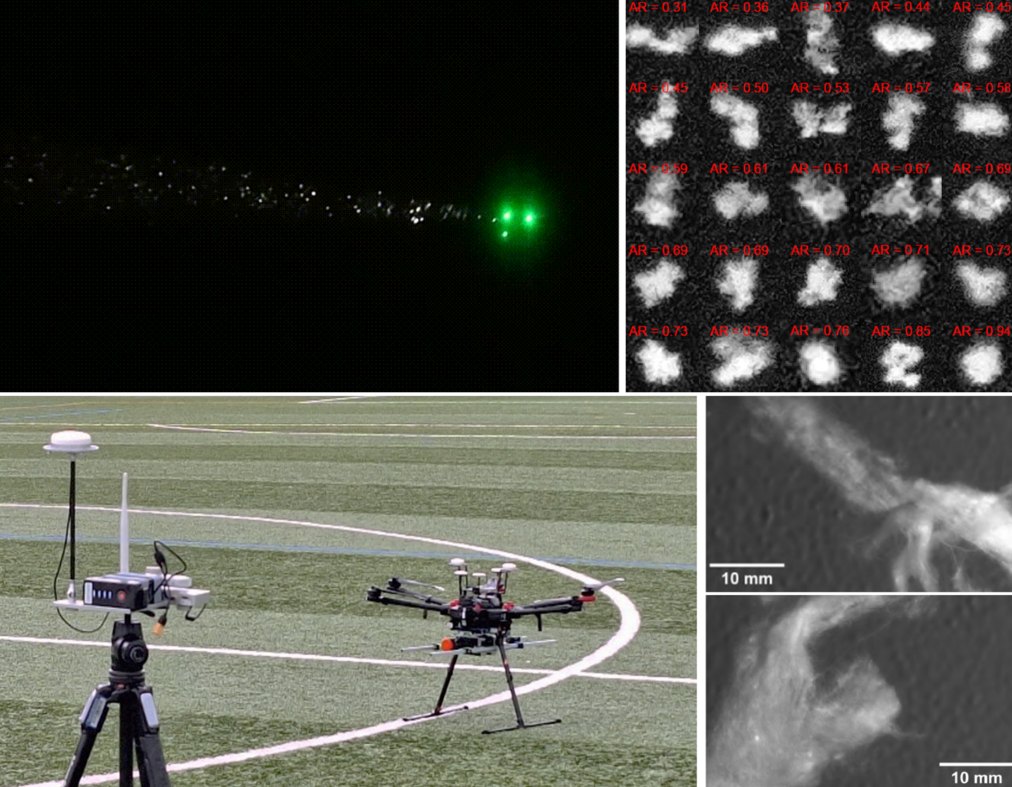
Student theses:
Shesterikov, I., Hovering a Microscope on a Drone (FS 2024), BSc. D-MAVT
Camerzind, M., Imaging of Natural Snowfall with a Drone (HS 2023), MSc. D-MAVT
Drone Flow Characterization
Using a drone as a particle imager offers a high degree of flexibility to explore the air column in search of various types of precipitation. However, the drone’s propellers induce significant airflow and can be intrusive to the observation volume. Depending on the payload and vertical position from the ground: ‘What is the overall aerodynamic signature of the induced flow around a drone and over which range extends its intrusion to various types of precipitation?’
We perform several experimental characterizations of the flow around differently sized drones over large length scales. Exploration of the large-scale induced flow around a drone requires wind-free ambient flow conditions. This requires an indoor measurement space that is large enough to avoid internal circulation. For example, probing the flow in a 25x25x10m3 dedicated motion capture system at the Robotic and Perception Group of the University of Zürich (RPG-UZH), or super-large-scale bubble tracking and smoke visualizations inside a 150x170x25m3 stadium arena.
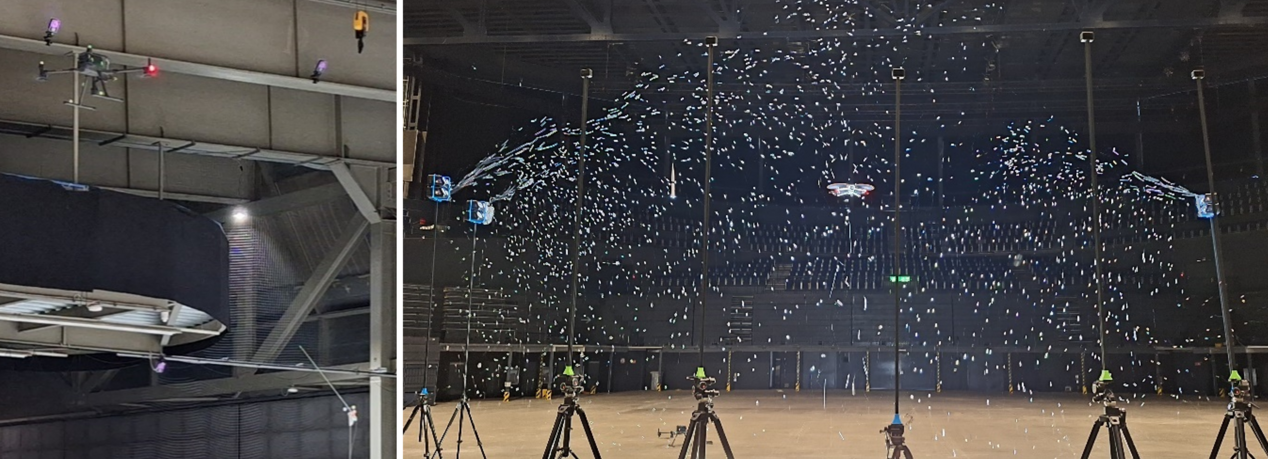

Student theses:
Schoeller, F., Large Scale PIV and PTV of Flow around a Drone (FS 2024), BSc. D-MAVT
Ziegler, D., Characterizing the Flow around a Drone. (HS 2023), BSc. D-MAVT
Want to get involved? Please check the IFD website, or follow us on external page SiROP for newly advertised student projects.